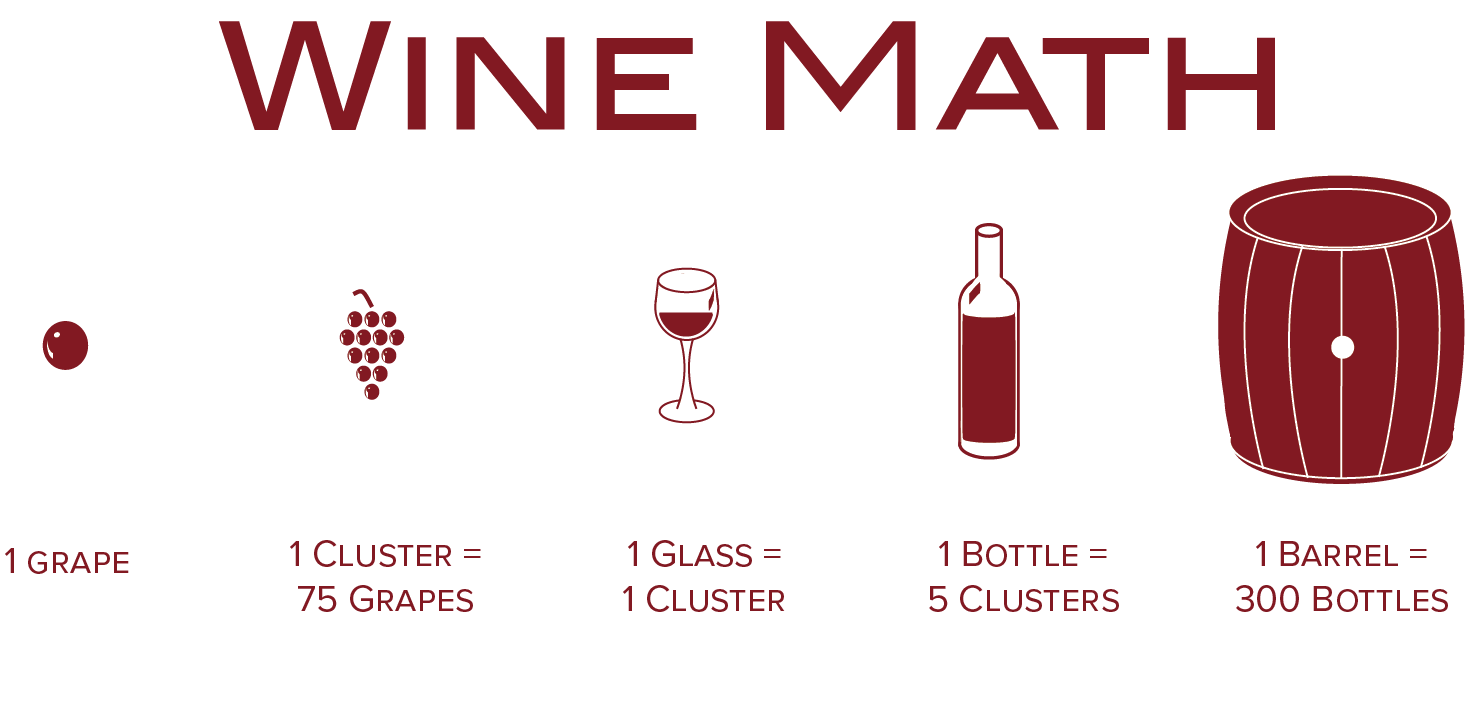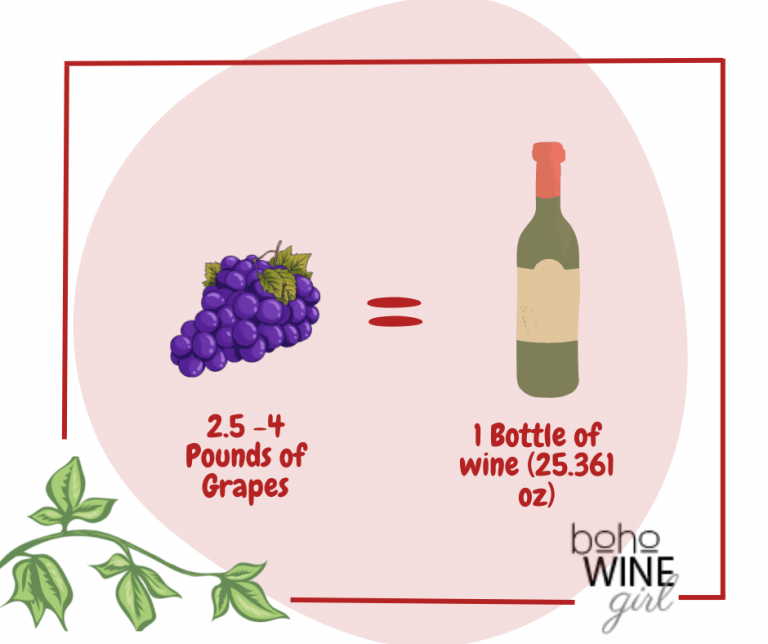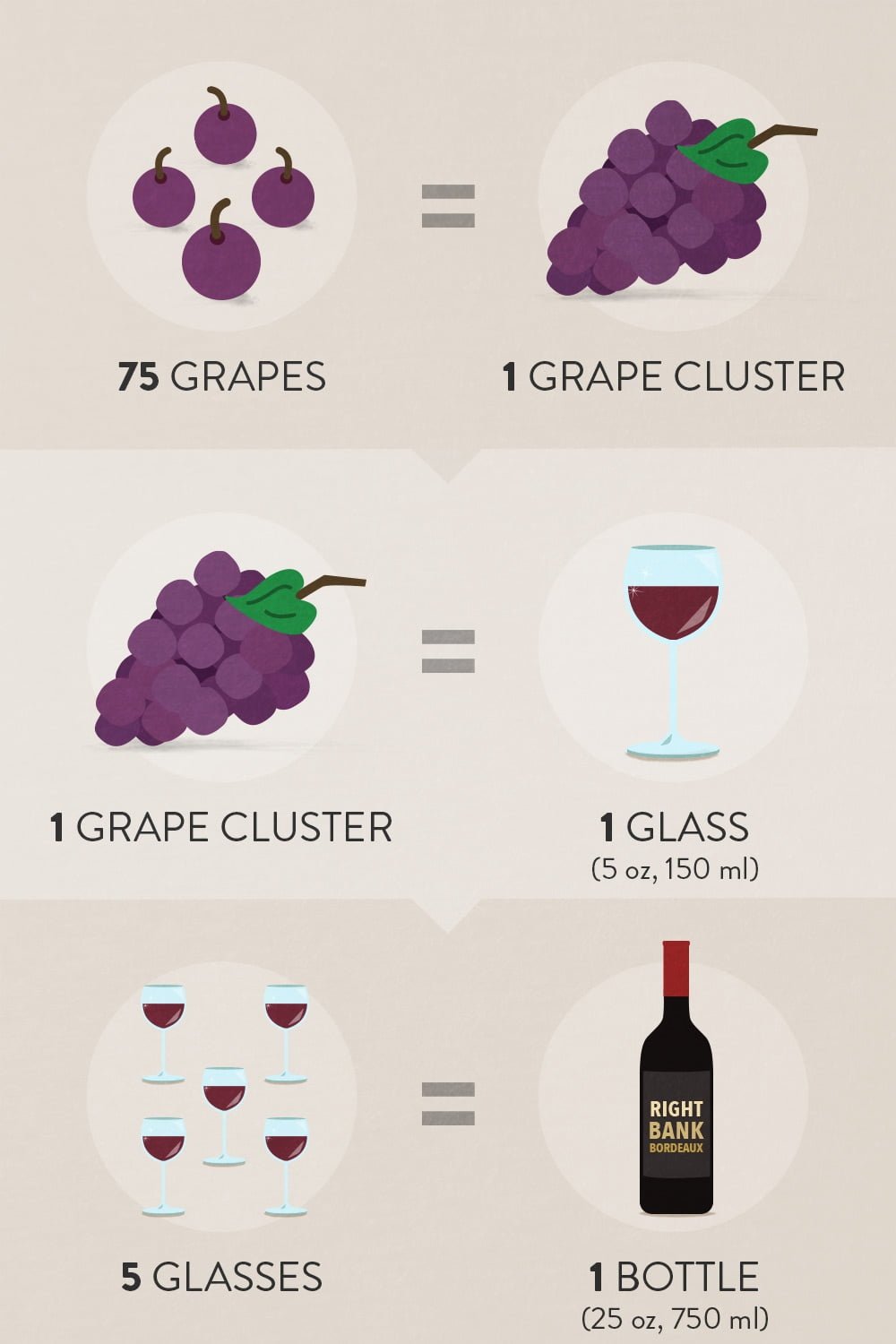In the fascinating world of winemaking, one may wonder: just how many grapes does it take to produce a single bottle of wine? The answer to this seemingly simple question is anything but straightforward. It involves a delicate balance of factors, including the grape variety, wine region, and production techniques. Delving into the intricacies of this process, this article will reveal the astonishing journey of grapes from vine to bottle, ultimately providing insight into the enigmatic question: how many grapes are in a bottle of wine?

Factors Affecting Grape Yield
Location
The location of the vineyard plays a crucial role in determining grape yield. Factors such as climate, sunlight exposure, and soil composition all have a significant impact on the health and productivity of grapevines. Different grape varieties thrive in different climates, so it is essential to select the appropriate grape variety based on the location of the vineyard.
Grape Variety
The grape variety chosen for cultivation is another vital factor affecting grape yield. Different grape varieties have varying growth habits, disease resistance, and yield potential. Some varieties may be more suited to a particular climate or soil type, while others may have higher yields but require more intensive farming practices.
Cultivation Practices
The way grapes are cultivated and managed also influences grape yield. Factors such as pruning techniques, irrigation methods, and pest control measures all contribute to the overall health and productivity of the grapevines. Proper cultivation practices, including regular monitoring and timely interventions, can help maximize grape yield.
Grape Yield per Vine
Yield Range
The yield per vine can vary significantly depending on various factors, including grape variety, vine age, and vineyard management practices. On average, a mature grapevine can produce anywhere from 20 to 40 pounds of grapes per vine. However, certain high-yielding grape varieties and exceptional growing conditions can result in yields exceeding 50 pounds per vine.
Factors Determining Yield
Several factors influence the yield per vine. These factors include the vine’s age, vigor, and health, as well as the pruning and training techniques employed. Additionally, weather conditions, such as temperature, rainfall, and sunlight exposure, can affect grape development and ultimately impact the yield. Proper vineyard management and regular monitoring are essential for optimizing grape yield.

Amount of Grapes Used in Wine Production
Wine Type
The type of wine being produced determines the amount of grapes required. Different wine types have varying grape concentration levels. For example, red wines typically require a higher grape-to-juice ratio compared to white or rosé wines. The grape quantity used in wine production can vary significantly based on the desired style and level of concentration.
Wine Style
The style of wine being produced also influences the grape quantity. Some wine styles, such as light-bodied wines, may require fewer grapes, while others, such as full-bodied wines, may demand a higher grape-to-juice ratio. Winemakers carefully select the grape variety and adjust the grape quantity to achieve the desired style and flavor profile.
Wine Region
The wine region where the grapes are grown can also impact the amount of grapes used in wine production. Different regions have specific regulations and standards concerning grape yield and wine production. Some regions may enforce limitations on grape production to ensure the quality and authenticity of their wines, while others may allow higher yields to meet market demands.
Grape-to-Wine Conversion
Juice Extraction
The process of converting grapes into wine involves extracting juice from the grapes. This can be done through various methods, such as mechanical pressing or maceration. The efficiency of juice extraction can influence the overall grape-to-wine conversion ratio, as it determines the amount of juice obtained from a given quantity of grapes.
Grape Waste
During the winemaking process, certain parts of the grape, such as skins, stems, and seeds, are removed and discarded. This grape waste affects the grape-to-wine conversion ratio, as it reduces the usable grape material available for wine production. However, grape waste can sometimes be utilized in other products, such as grape seed oil or grape pomace products.
Losses during Fermentation
Fermentation is a critical stage in winemaking, where the grape juice is converted into alcohol. During fermentation, some grape sugars are converted into alcohol and carbon dioxide. This conversion process can lead to losses in terms of volume as well as fruity aromas and flavors. Winemakers factor in these losses when calculating the grape quantity needed for a specific wine production.

Wine Bottle Sizes
Standard Bottle Sizes
The most common wine bottle size is the standard 750ml bottle, typically seen in retail stores and restaurants. However, there are various other bottle sizes available, each serving different purposes and occasions. It is important to consider the intended use and market demand when choosing the appropriate bottle size for a particular wine.
Wine Bottle Capacity
Apart from the standard 750ml bottle, wine bottles can come in various capacities, ranging from smaller 375ml bottles to larger 1.5L magnum bottles and even more massive sizes, such as the 15L Nebuchadnezzar bottle. These different bottle sizes offer flexibility for different consumption needs and preferences.
Calculating Grape Quantity in a Bottle
Average Grape-To-Wine Conversion Ratio
To determine the grape quantity required to fill a bottle of wine, winemakers rely on the grape-to-wine conversion ratio. This ratio represents the amount of grapes needed to produce a specific volume of wine. The average conversion ratio is approximately 1.4 kilograms of grapes per liter of wine. However, this can vary depending on factors such as grape variety, winemaking techniques, and desired wine style.

Grape Estimates for Different Wine Bottles
750ml Bottle
For a standard 750ml bottle of wine, approximately 1.05 kilograms of grapes are required. This estimate is based on the average grape-to-wine conversion ratio of 1.4 kilograms per liter mentioned earlier.
1.5L Magnum Bottle
A 1.5L magnum bottle typically requires around 2.1 kilograms of grapes. As the bottle capacity doubles compared to a standard bottle, the grape quantity needed also increases proportionally.
3L Jeroboam Bottle
A 3L jeroboam bottle would require approximately 4.2 kilograms of grapes. Similar to the magnum bottle, the grape quantity doubles as the bottle size increases.
6L Methuselah Bottle
For a 6L Methuselah bottle, around 8.4 kilograms of grapes are needed. The larger bottle size requires a higher grape volume to fill the increased capacity.
9L Salmanazar Bottle
A 9L Salmanazar bottle would require approximately 12.6 kilograms of grapes. The grape quantity increases further to accommodate the larger bottle size.
12L Balthazar Bottle
For a 12L Balthazar bottle, approximately 16.8 kilograms of grapes are needed. The grape estimate continues to grow in proportion to the bottle size.
15L Nebuchadnezzar Bottle
The massive 15L Nebuchadnezzar bottle requires approximately 21 kilograms of grapes. This substantial grape quantity is necessary to fill the enormous bottle size commonly used for special occasions and celebrations.
Wine Production Considerations
Desired Taste
When determining the grape quantity needed for wine production, winemakers consider the desired taste and flavor profile of the wine. Some styles may require more grapes to achieve a richer, bolder flavor, while others may call for a lighter, more delicate touch. The desired taste plays a significant role in determining the grape-to-wine conversion ratio and subsequent grape estimates.
Production Costs
Additionally, production costs influence the grape quantity used in wine production. Greater grape quantities generally result in higher expenses for vineyard management, harvesting, and winemaking processes. Winemakers need to balance the desired taste with the associated costs to ensure profitability and competitiveness in the market.

Conclusion
Understanding the factors affecting grape yield, grape-to-wine conversion, and the grape quantity required for different bottle sizes is crucial in the wine production process. Location, grape variety, cultivation practices, wine type, wine style, and wine region all contribute to the overall grape yield and grape-to-wine conversion ratio. By carefully considering these factors and making informed decisions, winemakers can optimize grape yield, production efficiency, and ultimately create wines that meet consumer expectations.


